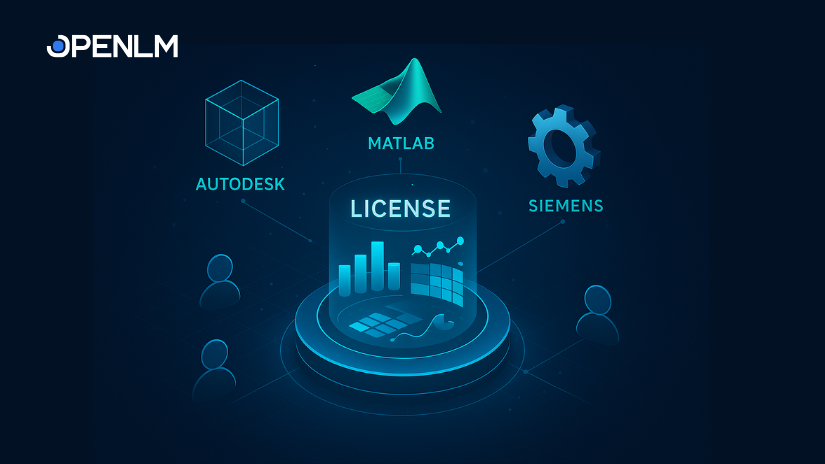The Internet is bursting with articles about how moving Office into the cloud can result in some unexpected and unwelcome results, primarily when it comes to costs. Companies are reporting that costs are as much as two to three times what was budgeted and signed for. Various recommendations are made, such as:-
- Understand what your on-premise Office commitment is and try and consolidate where you can
- Classify users according to roles and groups and identify which Office 365 offering is appropriate for their needs
- Watch out for idle licenses
- Check you are not running multiple versions and instances
- Limit access to licenses out of hours unless really needed.
- Purchase software to manage the licenses, because Microsoft does not help you in this regard.
These tips are big news to the normal purchasers of Microsoft Office, who are in IT Procurement or Finance. For CAD managers and license administrators of engineering and scientific software, they have already been down this road with much more expensive software, like Autodesk and Bentley products, both on-premise and in the cloud. They are familiar with all of the tactics and pitfalls may arise, such as:-
- increasing the price and/or sunsetting the on-premise alternative to push customers to moving to subscription – Autodesk does this and Microsoft raised the price of Office 2019 by 6% late last year with the same intention.
- Role-based solutions – if you are an Abaqus or Ansys customer you are familiar with product differentiation by role, such as product designers, and of course, all engineering software is bundled differently based in industry requirements.
- Identifying idle licenses and harvesting them according to policy is one of the biggest cost-savers for many of our customers. When a single license costs thousands of dollars, you don’t let it just sit there consuming dollars, especially with time-based software like Autodesk TokenFlex.
- Engineering license administrators are quick to pick up on multiple instances of licenses running, especially where more than one version is on campus simultaneously, a common problem with Autodesk.
- Multinationals that have “follow the sun” requirements often tailor license availability based on location. License use often needs to be prioritised as well, to give preference to critical projects or key users.
- Engineering companies know that the license manager provided by the vendor is not your friend; it is there to protect the vendor’s interests, not help you optimize your resources, that is why most companies have invested in software that does the job of balancing the concurrent license pool against peak user demand.
This list does not even include other unnecessary costs, like those incurred when using Bentley software, which allows users to access licenses even when there are no concurrent licenses available according to the license agreement, providing some unexpected costs at month-end.
Table of Contents
ToggleSoftware Spend that is Easily Overlooked
Although Office 365 licenses are very cheap in comparison to, say, Autodesk Cloud licenses, everyone in the business uses them, and over-purchasing and underutilization costs can be formidable for large and even mid-sized businesses. In many companies, the discretion for purchasing Microsoft Office licenses falls to the CFO, who is not wise to the cost complexities of software licensing. Even the CIO may decide to migrate from earlier on-premise licensing of Office to Office 365 by a simple one-for-one license swap, because everyone in the company needs a license and the pricing seems acceptable.
Extract from Microsoft pricing comparison: https://go.microsoft.com/fwlink/p/?linkid=861604
They may even decide to procure P5 licenses for everyone in the company, while it is doubtful that more than 10% of users actually need premium licenses. This is how the costs spiral. The difference between a P5 and a P3 license is $180 per annum; between a P5 and a ProPlus license is $276; multiply that by the number of users who do not need the premium subscription and you can see why taking the Office 365 route can be an expensive journey. There is no guarantee that these packages will not change in both content and pricing over time, which makes the future even more unpredictable. One also has to consider whether all the applications included are needed, such as Skype for business, when Webex or Zoom is already freely used in the company. The days of putting all one’s software eggs in one basket are long gone; the benefits of only having to rely on one vendor are outweighed by the risks of being locked in to their products.
Another aspect to be considered is that, although the overall management of Microsoft Office licenses is the responsibility of the CFO or CIO, the CAD manager and engineering license administrator has stewardship over the Office licenses needed by their users. The costs of these licenses may be charged back to the engineering business units, and it makes sense to double-check what is being charged out by central admin.
Timing also can be a factor in increasing the cost burden for large organizations. The rollout of the new product in a large organization can take months; meanwhile all the licenses purchased, but not yet implemented, are sitting on the shelf, chewing up dollars every month. It could be advisable to migrate in two phases, so as to minimise this wastage.
Why we Now Support Office 365 License monitoring
So engineering and scientific companies are wise to all the sneaky things that vendors do to improve their revenue streams. This is why our customers requested us to add monitoring of some key cloud software to our list that is not normally part of our software portfolio.
We applied our minds to what we provided for cloud software in the engineering space, such as ArcGIS Online, and applied the same principles to Office 365. While we were working on this, we also added Adobe Cloud software to the list, because, again, everyone uses Document Cloud and/or Creative Cloud for design or content management.
License administrators who now want to manage Office 365 or Adobe Cloud software can do it through our Easyadmin dashboard, without having to use the Applications Manager to define the business rules for these products. We hope this has made life that little bit easier for our present and future customers. This functionality is available from release 4.5 onwards, which may require an upgrade, but there are other enhancements as well that make it worthwhile.






